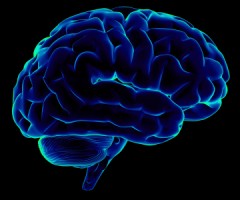In the last few months, federal and state authorities have started seeing what the media is calling the newest fad to hit the shelves of convenience stores, discount tobacco outlets, gas stations, pawnshops, tattoo parlors, truck stops, the internet, and other locations. Bath Salts (having nothing in common with actual bath salts) are a synthetic powder that is sold legally as alternatives to the controlled substances cocaine, amphetamine, Ecstasy, and methcathinone. Bath Salts are Schedule I controlled substance cathinone, which is a potent central nervous system stimulant. Bath salts are marketed as “research chemicals,”“plant food”, or “bath salts”, “not for human consumption,” to circumvent the Controlled Substances Act.
The powder is a crystal-like substance that is typically smoked, snorted, or injected. It often contains lab-produced chemicals such as mephedrone and MDPV (methylenedioxypyrovalerone). “It’s a derivative that’s very similar to amphetamines, and its side effects are largely the same side effects we see with amphetamines in large dose,” said Jeffrey Baldwin, professor of pharmacy practice and pediatrics at the University of Nebraska Medical Center in Omaha.
Bath Salts alter the levels of brain neurotransmitters, chemicals that send messages between nerve cells, and it exerts its greatest effects on dopamine and norepinephrine. The effects of these chemicals can last for three to eight hours. It is a central nervous system stimulant and abusers of “bath salt” products have reported that they experienced many adverse effects such as chest pain, increased blood pressure, increased heart rate, agitation, panic attacks, hallucinations, extreme paranoia, and delusions. Dr. Daniel Brooks, co-medical director of the Department of Medical Toxicology at the Banner Good Samaritan Poison and Drug Information Center in Phoenix, is familiar with mephedrone and MDPV as “relatively novel synthetic stimulants” but says that little academic research has been done on them and that they’ve never been tested on humans. Medical professionals aren’t 100 percent certain how these compounds are metabolized or how they’ll react with other drugs. The ingredients in bath salts aren’t listed on the packages, so users have no way of knowing what they’re actually ingesting.
Some of the street names for the bath salts include Red Dove, Blue Silk, Zoom, Bloom, Cloud Nine, Ocean Snow, Lunar Wave, Vanilla Sky, Ivory Wave, White Lightning, Scarface and Hurricane Charlie.






